
Dear Sir/Madam,
With reference to your mail I have prepared a brief answering your queries. I hope this will help you in the understanding of our product and in your function as the brand development agency. I would be more than happy to provide you any additional information you may require or any other sort of assistance to the best of my capabilities. Our corporation trusts completely your judgement in the development of our brand and we look forward to continuing the development of this brand with your agency.
Thanking you.
Yours sincerely,

P.S. On a more personal note, I believe that for the successful development
of the brand, the developer must have a feel of the brand himself, so I’m
taking the liberty of sending a case of our product to your office this
Saturday. Hopefully, I can also convince you to take a tour of our brewery
at your convenience. Who knows, we might have another Hopkins’ Schiltz
Beer campaign on our hands.
Cheers.
1. What is the Product?
The product is a beer in the ‘light beer’ category. It is by definition, extremely light in colour and body, and mild in flavour.
It is essentially a variant of one of the Carlton & United Breweries (CUB) Group’s revolutionary beers – Foster’s LightIce. Developed using the innovative process of ultra-high gravity brewing, Foster's LightIce quickly claimed the number one post in the low alcohol beer market within months of its debut in Australia in 1995 and has steadfastly remained a popular choice in the light beer segment since that time.
Light beer has is beer with a low alcohol content (between 1 and 4% vol), or fewer calories (-30%), or both. Foster’s LightIce has an alcohol content of 2.7% V/V, in contrast with the already established brands in India like Kingfisher Lager which has an alcohol content of 4.8% V/V and our own Foster’s Lager with 4.9% V/V.
The Indian market does not have a beer in this category. The light beer segment promises to grow at an extremely fast rate with a widening consumer base, taking into account that as of Sep. 26, 2001, Budweiser, long the No. 1 selling beer in America, has been toppled by its low cal sibling, Bud Light (both Anheuser-Busch, St. Louis beers). The September 2001 ‘Market Watch’, a spirits industry publication, reported that Bud Light has eclipsed Budweiser for the first time since the light beer was introduced in 1982. In 2000, light beer accounted for 44% of all the malt beverages consumed in the United States. Also, low alcohol beer sales have doubled in volume in the past 10 years in Australia and low alcohol beers now account for over one in four beers sold. We at Foster’s see this change as part of an overall trend.
As none of the other leading international brands in this category –
Bud Light, Carlsberg Light, Coors Light, Old Milwaukee Light or Miller
Lite are planning launches in the Indian sub-continent in the near future,
we envisage this as an excellent opportunity and are keen to get the first-mover
advantage.
 As
far as the Light beer segment goes, there is no existing competition in
the market. However, a number of well-established brands, especially lagers,
have a significant market presence. Chiefly – Kingfisher - India's celebrated
malty draught lager since 1857; voted ‘The World's Best Lager’ in Stockholm
and Chicago.
As
far as the Light beer segment goes, there is no existing competition in
the market. However, a number of well-established brands, especially lagers,
have a significant market presence. Chiefly – Kingfisher - India's celebrated
malty draught lager since 1857; voted ‘The World's Best Lager’ in Stockholm
and Chicago.
UB (United Breweries Ltd.) is the market leader in the Indian beer market with a 40% market share. Its flagship Kingfisher brand alone commands 25% market share. The company has however been focussing on strong beer, which has driven growth. The company introduced its strong beer, Kingfisher Strong during the year 2000 in the selected market of Maharashtra and Karnataka. The move came as a reactive move following increasing shift of consumers towards strong beer, a trend started by Shaw Wallace. While the overall market grew marginally by 2%, the strong beer market grew at 8-10% during the year at the expense of lager beer. The market is now skewed towards strong beer with more than 60% of the market being strong beer market. Other major developments in FY00 have been the entry of a few big international players in the domestic market and the opening up of the beer market in Tamil Nadu.
UB is in the process of strengthening its core brands. UB has formed a new subsidiary, Millenium Alcobev, to develop strong regional markets for its beer brands. It launched a new brand KingFisher Gold during the year. The company has also tied up with some of the breweries of Mohan Meakins for beer manufacturing. Recently it has also acquired 31% stake in Inertia Industries, manufacturers of Sandpiper beer. UB also sponsors and organizes a number of events in the fields of football, fashion etc to increase awareness about its brands.
Beer mix today is approximately 60 percent lager beer and 40 percent
strong beer. This ratio was very different 4 years ago. Over the last four
years strong beer has been the fastest growing segment. This was the segment
in which UB was not having any significant position. This was completely
usurped by Shaw Wallace. Mr. R K Jain of Shaw Wallace really did a brilliant
job of that. But now the tables have been turned. As of today while Shaw
Wallace has approximately 28 to 30 percent of the strong beer market, UB
already has achieved 14 to 15 percent of that strong beer market and is
growing very fast. It launched Kingfisher Strong only in May of
2001. And once it is able to take Kingfisher Strong national, it
will try to match Shaw Wallace's market share over the next few years.
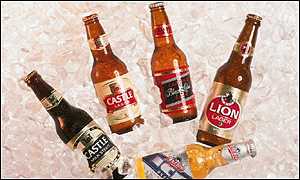
Apart from Kingfisher and our own Foster’s Beer, the other brands
in the Indian market are Carling Black Label, Carlsberg, Dansberg, Golden
Eagle, Guru, Maharaja Premium Lager, Haake Beck, Haywards 2000 Beer, Haywards
5000, Haywards skol, Flying Horse Royal Lager, Taj Mahal, Heinekin, Hi-Five,
Ice, Kingfisher Diet, Kingfisher Strong, Kirin, KnockOut, Legend, London
Diet, London Draft, London Pilsner, Royal Challenge, San Miguel Lager,
Sand Piper, Strohs and Zingaro.
The major brands which belong to large groups in the industry (apart from UB) are –
Shaw Wallace - Royal Challenge Premium Lager, Haywards 2000 Premium Lager, Haywards 5000 Super Strong, Hi-Five and Lal Toofan.
South African Breweries India Ltd. - Knock-Out, Continental and Three Lions, a new brand that was launched in the autumn of 2001 by SAB in Uttar Pradesh, Chandigarh and Himachal Pradesh.
3. Analysis of competition in the market.
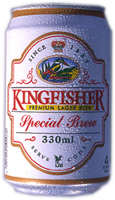 Executive Summary
Executive SummaryThe UB group has chalked out a major restructuring plan under which it has merged all its spirits companies under the McDowell umbrella. The company has also decided to split its operations into beer business and investments business. The company would also be productively utilizing its real estate in the city of Bangalore to set up a Software Technology park. The UB Group has also announced its intention to extend its well-known spirit brands Mcdowell and Bagpiper to beer to leverage on the strong brand equity.
The UB management has gone on record saying they will actively look at trifurcation of the company into the real estate portion, the investments and the breweries, with proportionate share holdings, in order to ensure that there's no shareholder value damage. They are, in essence, losing the ‘Focus’, which Al Ries preached integral for the survival of a company. UB thus is diversifying its operations and does not focus solely on the beer market any longer. Even in the beer market, they are moving towards strong beer and essentially feeding off their own share in the lager beer segment.
On the core beer business, UB claims to make a return on capital employed
exceeding 20 percent and may be closer to 25 percent. But figures are not
available to really back this up given that all the numbers are consolidated.
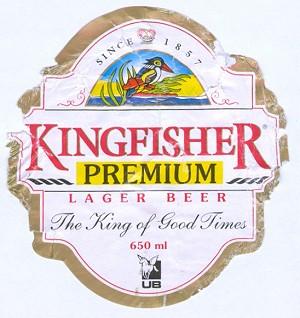 Gross Sales recorded
a negative growth of 3% over the last 5 years. In FY00, sales dropped by
7.3%yoy to Rs2.63bn. The drop in sales can be attributed to a flat market
growth, increase in competition and higher prices resulting from a high
level of taxation on beer. In volume terms, sales dropped by 8%yoy to 1.23mn
hectolitres. The company however increased its share in the lager beer
market from 48% to 53% in FY00. The company introduced its strong beer,
Kingfisher Strong during the year in selected market of Maharashtra and
Karnataka. The strong beer sold more than 2mn cases in the first 10 months
of its launch. The company earned other income of Rs1.22bn during the year,
which registered an increase of more than 90%. The increase in other income
has come from one time sale of company's investment to the tune of Rs891mn.
Gross Sales recorded
a negative growth of 3% over the last 5 years. In FY00, sales dropped by
7.3%yoy to Rs2.63bn. The drop in sales can be attributed to a flat market
growth, increase in competition and higher prices resulting from a high
level of taxation on beer. In volume terms, sales dropped by 8%yoy to 1.23mn
hectolitres. The company however increased its share in the lager beer
market from 48% to 53% in FY00. The company introduced its strong beer,
Kingfisher Strong during the year in selected market of Maharashtra and
Karnataka. The strong beer sold more than 2mn cases in the first 10 months
of its launch. The company earned other income of Rs1.22bn during the year,
which registered an increase of more than 90%. The increase in other income
has come from one time sale of company's investment to the tune of Rs891mn.
The company made an operational loss during the year. Excluding other income the company incurred an operational loss of Rs628mn. The increase in operational losses can be attributed to increase in selling and promotion expenses, employee cost and other expenses. Raw material costs too increased marginally during the year. Employee cost increased by 2% points during the year, while selling and promotion expenses increased by 7% points. In absolute terms the selling and promotion expenses increased by 25%yoy to Rs738mn.
Interest burden was higher by 14.4%yoy at Rs290mn, as the company raised
fixed deposits during the year. The company redeemed all its debentures
and also reduced its debt from bankers but it raised debt from other sources.
UB has taken a number of steps in view of the increasing competition in order to maintain its stronghold in the domestic market. The company launched its Flagship brand KingFisher in Strong variety. The move came as a reactive move following increasing shift of consumers towards strong beer, a trend started by Shaw Wallace. Kingfisher Strong has sold more than 2mn cases in the first 10 months of its launch. The company roped in one of the major persons from Shaw Wallace and Company, Mr. Ravi Jain and floated a new company, Millenium Alcobev Limited, as UB's subsidiary to focus on regional brands. The company has transferred distribution and marketing rights of its regional brands, Sun Lager, Flying horse, Kalyani Black Label, Bullet and Charger to MABL in order to focus on its national and core brands of KingFisher, Ice Beer etc.
Packaging of the flagship brand, KingFisher Lager premium beer has been
upgraded. The company won first prize for best brew at the New Zealand
International Beer Competition. And also first prize for packaging at Asian
Grand Prix Cyrel 2000 award. The company increased its share in the lager
beer market from 48% to 53% during the year.
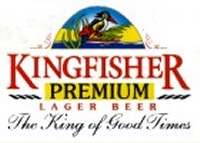
· Kingfisher entered into a contract with Ajay Jadeja and Saurav
Ganguly, the successful duo of Indian Cricket
· United Breweries Ltd. emerged as the largest exporter of beer
in the country
1998
· United Breweries launched the country's first premium Ice Beer
to be introduced in Mumbai and selected cities of Maharashtra
· United Breweries, the holding company of the UB group, will
be bifurcated into two companies: a beer company and an investment holdings/property
entity
· United Breweries Ltd. (UBL) proposes to enter into a joint
venture with Ugar Sugars of Belgaum to produce high-quality barley, which
it will use to produce beer
1999
United Breweries Ltd. (UB), has launched www.kingfishernetshop.com, an Internet shop for the complete range of Kingfisher beer and Kingfisher line of clothing & accessories.
2000
· United Breweries Ltd. launched its fast growing brand Kingfisher
Strong on the Net in Bangalore.
· Kingfisher, major lager beer and flagship brand of United
Breweries, was adjudged the best beer in class `A' category at the International
Beer Awards 2000.
· The United Breweries Ltd. and its subsidiary Millennium Alcobev
Ltd. have entered into a contract agreement with Mohan Meakins to brew
beer at the latter's facilities in Maharashtra, Uttar Pradesh, Andhra Pradesh
and Daman.
· Mr. Ravi Jain's Millennium Alobev Ltd., a subsidiary of United
Breweries, is in negotiations with an international beer company for an
equity joint venture to market a super premium beer in India.
· UB Ltd has carried out a reorganisation of its businesses
by hiving off four subsidiaries and making seven companies its fully owned
arms, apart from acquiring the sorghum business of South African Breweries
Ltd.
2001
· United Breweries will re-launch San Miguel and London Pilsner,
the new beer brands in its portfolio.
· United Breweries (Holdings), a wholly owned subsidiary of
United Breweries, has entered into an agreement to acquire up to 75 per
cent of the paid-up equity capital of Mangalore Breweries and Distilleries
Ltd.
· The United Breweries (UB) group has signed reseller and licence
agreement to market SeeItFirst interactive streaming media solutions in
Asia.
· UB Ltd has increased the borrowing limit of the company by
Rs 200 crore to Rs 700 crore to fund its various plans including acquisitions.
· United Breweries Ltd. (UBL), the largest beer manufacturer
and marketing company, has launched two more premium brands - London Pilsner
premium beer and London No.1 strong beer - in Hyderabad.
2002
· United Breweries Ltd has informed that their ultimate subsidiary McDowell Alocbev Ltd (MAL) has concluded an agreement arising out of which MAL have acquired 100% shareholding in Empee Breweries Ltd which has two breweries, one in Kerala and one in Tamil Nadu.
UB’s advertising, promotion expenses have been Rs 488.3 mn, Rs 590.9 mn, Rs 737.6mn, Rs 779.4 mn, each year respectively over the period March 1998 to March 2001.
With the ban on surrogate advertising in the coming and the government clamping down on alcoholic beverage companies, added to the analyses from United Breweries’ March 2002 quarterly results, which show adjusted profit after tax have fallen 77.2% from a loss of Rs 128.0 mn in March 2001 to a loss of Rs 226.8 mn in March 2002, we do not expect UB or any of the other brands in the market to go in for new campaigns. Thus, in this regard as well we hope to be the only visible player in the market at least as far as advertising goes as we plan to launch with the gusto of a new entrée and so have a much higher advertising budget than any of the other brands at this juncture, most of whom will be pulling out ads at this time.
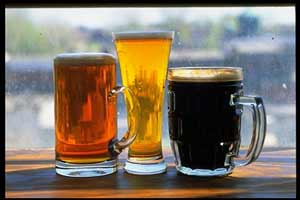 SAB is the world's
leading brewer in developing markets, with major brewing and distribution
operations in Africa, Central and Eastern Europe, and Asia. It is the world's
fifth largest brewer overall by volume with 86 breweries in 22 countries
and over 31,000 employees. In the year to March 31 2001, SAB generated
US$646 million pre-tax profit from a turnover of US$4.184 billion. SAB
is listed on both the London and the Johannesburg stock exchanges.
SAB is the world's
leading brewer in developing markets, with major brewing and distribution
operations in Africa, Central and Eastern Europe, and Asia. It is the world's
fifth largest brewer overall by volume with 86 breweries in 22 countries
and over 31,000 employees. In the year to March 31 2001, SAB generated
US$646 million pre-tax profit from a turnover of US$4.184 billion. SAB
is listed on both the London and the Johannesburg stock exchanges.
SAB has operated in India since October 2000, when it bought the Narang brewery, located near Lucknow in the state of Uttar Pradesh. The brewery, which has a capacity of approximately 120,000 hectolitres, has recently been modernized and commenced full production in April 2001.
In June 2001, SAB acquired a controlling interest in Mysore Breweries Limited (MBL), listed on the Bangalore Stock Exchange. MBL operates two breweries, with a combined capacity of 480,000 hectolitres, situated in Southern India at Bangalore and Aurangabad.
SAB India has set up its Corporate Office in Gurgaon, which is near New Delhi.
In July 2001, South African Breweries revamped and re-launched Knockout beer brand, which it has acquired following its takeover of Mysore Breweries.
Speaking to The Financial Express South African Breweries’ managing director Roy Bagattini said, “Knockout has a strong market down in southern India. Now that we have acquired this brand, we plan to launch it on an all India basis. Knockout is a strong beer and there is a growing market for this segment.”
On Thursday, 7 February 2002, South African Breweries plc (SAB) announced the roll-out of its international award winning Castle Lager brand into India.
Richard Rushton, managing director of SAB India, speaking at the launch in Delhi, said: "We have identified Delhi as the best entry point for Castle Lager because it is primarily a lager beer market, an international gateway to the rest of India and the city is also one of the key influencers of taste and fashion for other metropolitan areas within India. Castle Lager will be brewed locally and the company has undertaken significant technology upgrades in its breweries to retain Castle Lager's taste and flavour. We aim to achieve over 10% of the markets where the brand is available within in the first year. Our strategy is to gradually increase our depth of distribution of Castle Lager as awareness increases in cities throughout the region. This will be supported by ongoing marketing initiatives around the Castle Lager brand to the trade and consumers to build up their brand awareness. Castle Lager has been in existence for over one hundred years and has a strong South African heritage.
"Our investment in India is focused on building a national presence. SAB India's growth strategy is built around the acquisition of production capacity in key markets, upgrading and modernising breweries and the introduction of internationally proven brands, as well as developing local brands, for consumers in India. Today's launch is evidence of our commitment to this strategy and to our operations in India. "
"Our entry into India is a further extension of our strategy of investing in developing markets. We are in India for the long term and will balance the immediate demands of the market with our long-term duties to stakeholders - to investors, a fair return; to employees, a safe and rewarding job; to suppliers, fair dealing; to governments which tax and regulate us, open and honest relations; to local communities and wider society, a commitment to enhance and work for the common good."
In July 2001, South African Breweries is revamped and re-launched its brand Knockout, which it had acquired following its takeover of Mysore Breweries.
Speaking to The Financial Express South African Breweries’ managing director Roy Bagattini said, “Knockout has a strong market down in southern India. Now that we have acquired this brand, we plan to launch it on an all India basis. Knockout is a strong beer and there is a growing market for this segment.”
On 7 November 2001, South African Breweries (SAB) announced that it
had acquired, through its subsidiary company, SAB India Limited, a 53%
controlling interest in Rochees Breweries Limited (RBL), a company listed
on a number of stock exchanges in India, including the Bombay Stock Exchange.
The purchase consideration for SAB's interest is US$2 million payable in
cash, the equivalent to 97 million rupees, or 10.15 rupees per share. RBL
operates a new brewery situated in Rajasthan, approximately 100 kilometres
from New Delhi, with a capacity of 110,000 hectolitres, which is currently
being expanded to 170,000 hectolitres. The brewery, which currently brews
under licence for United Breweries, requires no significant upgrading.
SAB India Limited will use the brewery to produce a stable of local and
international brands.
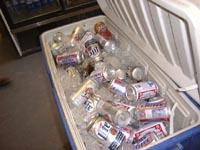 Other possible
competition –
Other possible
competition –

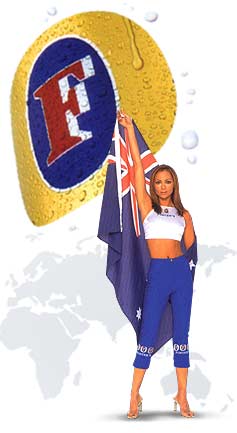 In 1886 two
brothers, W.M. and R.R. Foster, stepped off the boat in Melbourne from
New York City to make their fortune brewing a new kind of beer for the
colonies. They brought the most advanced brewing equipment available and
the world's best brewing expertise in a German/American brewer and a New
York refrigeration engineer. The brothers paid almost every penny they
had, £48,000, to build Melbourne's most modern brewery. The first
Foster's Lager prototype was brewed in November 1888 and bottled in the
classic heavy bottle of the day with a wired-down cork.
In 1886 two
brothers, W.M. and R.R. Foster, stepped off the boat in Melbourne from
New York City to make their fortune brewing a new kind of beer for the
colonies. They brought the most advanced brewing equipment available and
the world's best brewing expertise in a German/American brewer and a New
York refrigeration engineer. The brothers paid almost every penny they
had, £48,000, to build Melbourne's most modern brewery. The first
Foster's Lager prototype was brewed in November 1888 and bottled in the
classic heavy bottle of the day with a wired-down cork.
When Foster’s entered the Indian market our goal was stated by Pradeep Gidwani, Managing Director, Foster’s India Ltd. “We want to establish Foster’s as an international premium lager beer. Therefore, the international packaging and size.” We came in with both sizes, though pint-sized (330 ml) bottles were more aggressively promoted. 70% of Foster’s sales today come from the pint-sized market and the company enjoys 31% of the market in Maharashtra.
Prior to July 1998, Foster’s was just another of the foreign beers available
in India. In 2000, we notched up sales of Rs 25 crores with around 1.58
million cases sold. Our reading of the Indian pitch has so far been accurate.
Domestic players are realising that we are no pint-sized challenge!
4. Who is our target audience? (Demographic and Psychographic definition)
 The beer-drinkers
in the country are much younger than the average beer-drinker elsewhere
in the world. This makes them more likely to carry the brand with them
for a lifetime. Also, as the target audience becomes younger, a
light beer like Foster’s LightIce, is expected to attract first-time
drinkers, since it is much milder than any of the other beers in the
country. Even if one accounts for the fact that the strong beer market
is growing fast in India, we expect that at times when consumers of our
product shift to stronger beers, they will restrict themselves to the Foster’s
brand because of the association they have with it and the positive connotations
from the Foster’s name.
The beer-drinkers
in the country are much younger than the average beer-drinker elsewhere
in the world. This makes them more likely to carry the brand with them
for a lifetime. Also, as the target audience becomes younger, a
light beer like Foster’s LightIce, is expected to attract first-time
drinkers, since it is much milder than any of the other beers in the
country. Even if one accounts for the fact that the strong beer market
is growing fast in India, we expect that at times when consumers of our
product shift to stronger beers, they will restrict themselves to the Foster’s
brand because of the association they have with it and the positive connotations
from the Foster’s name.
A lot of new variants promise to gain prominence, but mainly in niche urban segments. The sophisticated consumer who drinks beer for the experience and not to get drunk will lap up ice beer or light beer. In urban centres, apart from first time users we are also targeting women, who as ‘the times they are a changing,’ are entering the market for beer. Essentially, women shy away from beer consumption because it is associated with calories, and has traditionally been a buddy drink, associated with pot-bellied men sitting at bars and shooting darts.
Our product however is light both in colour and body, and mild in flavour. It is highly carbonated with low bitterness and no aftertaste. It has fewer calories lower alcohol content. It thus moves away from the traditional psychographics of the sector and toward the more up-market, college/office going youth, male or female, with aspirations, who sees himself as both physically and mentally fit, has an attitude of self-confidence and nurtures the belief that ‘he/she can change the world’.
Maharashtra is the highest consumer of beer and has registered
a rise from 100-lakh cases in '91 to 120 lakh cases in '96, an average
growth of 3%. Draught beer is around 10% of the beer market here with all
three major players enjoying a similar share. Nationally, the draught beer
and canned beer shares are under 5%.
| Rank | Country | 1995 | 1996 | 1997 | 1998 |
| 1 | Czech Republic | 156.9 | 157.3 | 161.4 | 161.8 |
| 2 | Republic of Ireland | 138.6 | 145.4 | 152.0 | 150.5 |
| 3 | Germany | 135.9 | 131.9 | 131.2 | 127.4 |
| 7 | United Kingdom | 100.9 | 101.9 | 103.6 | 99.4 |
| 12 | Netherlands | 85.8 | 85.5 | 86.3 | 84.2 |
| 13 | US | 83.6 | 83.5 | 83.2 | 82.0 |
| 39 | Italy | 25.4 | 24.0 | 25.4 | 26.9 |
Per capita consumption in India is hovering around a measly 0.5 litres per annum. These figures pale into insignificance if one compares them with those of Czech Republic that has the highest per capita consumption of 156.9 litres per annum (see box)
Per capita consumption is directly related to the taxation, according to an industry observer. For instance, in Maharashtra there is a direct 100% excise duty on Beer. An equivalent 650 ml bottle is available for approximately Rs 8 in China. Which is why the per capita consumption in China is a high 16 litres per annum.
Deregulation is the only way out and it should happen in the near future. The beer industry has been united in airing its views in this regard. By de-regulation we mean that beer must be de-linked from liquor and the State must be reasonable enough to lower beer price (it must be mentioned that there is also a debate that beer must be made part of Central Excise). If de-regulation happens, the Indian beer market will expand 10-15 times in the next five years. I mention this because we have to keep this in mind as a shift in government policy such as this will broaden the demographic base significantly.
Given the levies, illicit liquor is actually available at far cheaper prices compared to mild beer. So, given India's economic conditions, 'kick for the buck' being the norm, beer stands no chance in the lower income segments. And therefore over the last three years, we have seen the emergence of strong beer as a category, which actually satisfies this need, but, globally, strong beer is a very, very small component of the market. It is really lager beer, which is the key segment. The day the government begins to distinguish between beer and spirits in terms of the state levies and impositions, in terms of the restrictions on marketing and advertising, there will be a huge opportunity in the beer business. Especially given India's demographics and given the huge purchasing power of the youth in India. We at Foster’s do not plan to wait for that day and then start moving. Once we have established ourselves in the market, when the day comes, we hope to have built such a strong base in the segment that we cannot be shaken from our prime position.
In worldwide share of throat, the spirits to beer ratio is 1:7. In India the spirits to beer ratio, taking both the organised and unorganised sector together is in the vicinity of 7:1. Which means we're talking of a 50 times differential between the two. We have reached this stage because brewing is a more capital-intensive business than distilling and therefore there are greater entry barriers. However, our product has the advantage of having a well-established industrial unit as well as an excellent network of dealers and distributors thanks to Foster’s Lager.
An important aspect that we must keep in mind for our launch is that the legal minimum age to purchase liquor ranges from 18 years in some state to 25 years in others. Delhi has a minimum age limit of 25 years. So far, the efficiency of enforcement has not been studied. It has, however, been shown that an increase in the age of legal drinking from 18 years to 21 years achieves nearly 60 per cent of the effect of prohibition on alcohol consumption. Which means that, at least in the launch period, we would like to go the Foster’s Lager way and launch in Maharashtra, expanding later to other parts.
By the year 2010, it is estimated that 47.5 billion gallons of beer will be consumed worldwide - equal to nearly 7 gallons for every man, woman and child on earth. 60 percent of consumption will occur in Europe and the United States, down from a current 70 percent of the world market. The majority of the difference will occur in Asia, where it is predicted that consumption will increase by almost 35% during the period.
The US demographics have beer consumption as overwhelmingly male-dominated, with men accounting for more than 80% of the volume consumed. In India, men account for an even higher percentage of the volume consumed. Of all the beer types, light beer has the strongest following among women consumers. Women beer drinkers are more attracted to specialty micro brewed beers than they are to the big brands, possibly because of their greater variety.
In the US, the largest groups of beer consumers are those that are employed full time with a household income greater than $75,000. At minimum they have graduated from high school and/or attended college. They tend to be men between the ages of 25 to 34 and most often are married with households of 3 or more. According to the commercial psychographics profile system called VALS2, these groups of people are classified as action-oriented consumers who enjoy variety and adventure. Anheuser-Busch, the makers of Budweiser, identify this group with primarily focusing on the "Generation X" demographic segment.
We at Foster’s have witnessed an exaggerated version of this in the demographics in India. Beer consumers here are either college going, or employed full time and belong to the SEC AB classes. The consumption age however has been decreasing over the years as may be seen in Kerela, where the age at which youngsters begin to consume liquor has come down. In 1986 the age was 19, by 1990 it had dropped to 17, and by 1994 the age was 14. Foster’s of course does not intend to target consumers below the legal age limit. I merely cite these statistics to give an idea of the consumption patterns in the country and a better understanding of our target audience.
The consumer demographic profile, media reach and beer consumption with
relation to other liquids in India is enclosed herein. Please note that
advertisements in the press and local TV in the category are not permitted
by the government of the state. They have however been included herein,
purely for the purpose of comparison. I have taken the liberty of highlighting
the segments I feel would be the most responsive to our product. However,
we trust the judgement of your agency in this regard. If you do feel that
we need to expand our contract the target base in any sector, then please
keep me updated of the same.
| SEC | Size(mn) | Distribution% | Press% | TV% | Satellite% | Radio% | Cinema% |
| A | 18.0 | 10.0 | 86.0 | 95.0 | 65.0 | 22.0 | 36.0 |
| B | 33.0 | 18.0 | 71.0 | 91.0 | 50.0 | 21.0 | 33.0 |
| C | 40.0 | 21.0 | 57.0 | 86.0 | 41.0 | 20.0 | 32.0 |
| D | 42.0 | 22.0 | 36.0 | 75.0 | 28.0 | 18.0 | 30.0 |
| E | 55.0 | 29.0 | 18.0 | 60.0 | 17.0 | 14.0 | 27.0 |
| Urban | 187.0 | 100.0 | 46.0 | 78.0 | 35.0 | 18.0 | 31.0 |
| R1 | 10.0 | 2.0 | 53.0 | 75.0 | 22.0 | 34.0 | 23.0 |
| R2 | 30.0 | 6.0 | 41.0 | 64.0 | 17.0 | 30.0 | 22.0 |
| R3 | 151.0 | 31.0 | 24.0 | 49.0 | 8.0 | 24.0 | 20.0 |
| R4 | 303.0 | 61.0 | 5.0 | 25.0 | 2.0 | 13.0 | 13.0 |
| Rural | 494.0 | 100.0 | 14.0 | 36.0 | 5.0 | 18.0 | 16.0 |
| Total | 681.0 | 23.0 | 47.0 | 13.0 | 18.0 | 20.0 | |
| AB | 51.0 | 28.0 | 76.0 | 92.0 | 56.0 | 21.0 | 34.0 |
| ABC | 91.0 | 49.0 | 67.0 | 90.0 | 49.0 | 21.0 | 33.0 |
| BCD | 115.0 | 61.0 | 53.0 | 84.0 | 39.0 | 20.0 | 32.0 |
| Census 1991 | Estimate 1995 | Estimate 1997 | Estimate 1999 | ||
| Area | ‘000sq.km | 3287 | 3287 | 3287 | 3287 |
| Population (Est Jan1,1999) | mn | 846 | 925 | 936 | 981.3 |
| Urban | % | 25.7 | 27.8 | 27.8 | 30 |
| Rural | % | 74.3 | 72.2 | 72.2 | 70 |
| States | nos | 25 | 26 | 26 | 26 |
| Union Territories | nos | 7 | 6 | 6 | 6 |
| Districts | nos | n.a | 466 | 466 | n.a |
| Urban Agglomerates / Towns | nos | 3768 | 3768 | n.a | n.a |
| Villages | ‘000 | n.a | 627 | 581 | n.a |
| Literacy Rate | % | 52.2 | 52.2 | 52.2 | 62 |
| Male | % | 64.1 | 64.1 | 64.1 | 73 |
| Female | % | 39.3 | 39.3 | 39.3 | 50 |
| Average Household Size | nos | 5.5 | 5.5 | n.a | n.a |
| Categories | 1995 | 1996 | 1997 | 1998 | 1999 | 2000 |
| Beer | 0.5 | 0.5 | 0.6 | 0.6 | 0.7 | 0.7 |
| Bottled Water | 0.1 | 0.1 | 0.1 | 0.2 | 0.3 | 0.5 |
| CSDs | 1.0 | 1.2 | 1.2 | 1.5 | 1.6 | 1.8 |
| Coffee | 2.0 | 1.2 | 1.3 | 1.3 | 1.3 | 1.2 |
| Distilled Spirits | 0.3 | 0.3 | 0.4 | 0.5 | 0.6 | 0.6 |
| Fruit Beverages | 0.1 | 0.1 | 0.1 | 0.2 | 0.2 | 0.2 |
| Milk | 41.2 | 41.7 | 40.2 | 40.7 | 40.1 | 40.5 |
| Tea | 49.7 | 50.9 | 49.2 | 52.5 | 48.2 | 44.2 |
| Wine | 0.0 | 0.0 | 0.0 | 0.0 | 0.0 | 0.0 |
| Subtotal | 94.8 | 96.1 | 93.1 | 97.4 | 93.0 | 89.7 |
| All Others* | 631.9 | 630.6 | 633.6 | 629.3 | 633.7 | 637.0 |
| TOTAL | 726.7 | 726.7 | 726.7 | 726.7 | 726.7 | 726.7 |
Source: Beverage Marketing Corporation
The product is a light beer - highly carbonated with low bitterness and no aftertaste. It has fewer calories and lower alcohol content.
Fine dining and wine have become synonymous, but beer, once the traditional drink at the table, is making a comeback as a dinner drink. In India especially, the wine market is not significant enough to make any impact on our industry. Moreover, the Indian palate and food is more associated with beer in any case. Light beers compliment spicy Mexican or Italian foods, and combine nicely with appetizers. The same goes for Indian foods.
“The popular wisdom, fostered (I choose the word carefully) by wine writers, is that one drinks lager with spicy foods. The sub-text is that wine is too sophisticated and delicate, and that no drink has enough flavour to stand up to a curry.” - The Independent, May 2 1998.
Beer is not fattening. Foster's and Victoria Bitter have only 38 calories per 100ml - 143 in a 375mL bottle. Compare that with red wine - 75 calories per 100ml, champagne - 70 calories per 100ml, full cream milk - 67 calories per 100ml, Coca Cola - 41 calories per 100ml or even skim milk - 46 calories per 100ml. The beer we are basing our product on - Foster's LightIce, (2.7% alc/vol) has a meagre 26 calories per 100ml.
Research shows that the moderate consumption of alcohol provides significant health benefits, primarily through reducing the risk of cardiovascular disease, but also with respect to reduction in risks associated with other ailments such as stomach ulcers, gallstones, arthritis, etc. Evidence suggests that people who drink beer regularly and in responsible amounts are substantially healthier. A study supported by the Canadian government said people who consume one or two drinks a day are healthier than non-drinkers. In terms of nutrition, beer is a source of vitamins as well as proteins. It is rich in vitamins B6 and B12 and essential amino acids. It's produced by natural fermentation and contains all natural ingredients.
Mr K. P. Balasubramaniam, MD, MBL, predicts, “A lot of new variants will gain prominence, but only in niche urban segments. Ice beer or light beer will be lapped up only by the sophisticated consumer who drinks beer for the experience and not to get drunk.
“I believe we have not taken seriously beer consumption in semi-urban and rural markets, which now gives the industry the bulk of its revenue. You will see exciting patterns of beer consumption if you were to visit suburbs of small townships. Look at Andhra Pradesh where there is a tendency to consume beer along with a nip of hard liquor. Similarly, preferences vary from region to region and this is worth a closer look.”
If you as the agency deem fit, we can also attempt to generate consumption in new ways such as promoting the use of our beer for beer recipes or the like. Here again, we can use the USP of “low bitterness, no aftertaste, low calories, low alcohol content” and thus encourage consumers to use our product in household recipes. This will open up an entirely new segment, and bring our product into the kitchens of India, increasing brand association and reaching out to an entirely different audience that would otherwise be uncomfortable with an alcoholic beverage in their homes. I include this only as a suggestion, and of course will go with whatever decision your agency takes in this regard. I have also taken the liberty of listing some possible recipes which could use our product.
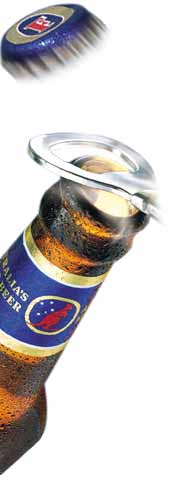
Backyard BBQ
Potato Salad
Beered And Baked Onions
Beer Caesar Salad
Cheese Beer Bread
Beer Marinade
Beer Cocktails
Shandy
Lager and Lime
Snakebite
Black Velvet
Lager & Black Currant
South Wind
Gator Beer
Beer Bloody Mary
Main Courses
Steamed Mussels
Pepper Flank Steak with Chilli Beer Sauce
Chicken in Dark Ale
Pan Seared Seabass with Beer Sauce
Chicken Cooked in Beer
Fish in Beer Batter
Beer ‘Barbecued’ Chicken
Instructions - Combine 1-1/2 cups beer, 1 tbsp. baking powder, and 1 egg (beaten) in a large bowl. Stir 1-1/2 cups of flour into the beer mixture gradually. Heat enough vegetable oil for deep-frying to 375 'F in an automatic deep-fryer or large saucepan. Separate 1 large Spanish onion, sliced thin, into rings and dip into batter to coat them. Immerse a few rings at a time in the hot oil so that they are completely covered. Fry for about 30 seconds or until they turn golden brown. Remove rings from oil and drain on paper towels.

Our only suggestion with regard to the brand name is that it should capitalise on the brand heritage which Foster’s enjoys, and in its association with Foster’s Lager which is already established in the market as one of the leading beers.
Foster's Lager is the international flagship brand for the Foster's group. The brand has achieved international growth of more than 60 per cent in the last five years and is one of the fastest growing beer brands in the world today.
The product is a variant of the international brand Foster's LightIce, and we are not averse to retaining the name here. However, as LightIce is an international brand, and we might want to make some alterations, for example in the packaging of the product, we would rather not keep the brand name itself, as any changes we undertake in India would necessarily have to be reflected in the mother brand worldwide. Naming it something like simply ‘Foster’s Light’ allows us to experiment with the brand while retaining the heritage and association of the Foster’s label.
Keeping these considerations in mind, the final call rests with your
agency as always.
7. What kind of feelings/imagery should the brand name evoke?
An advertising message encoded in one culture has to be decoded in another
culture in the case of standardised marketing. This process may be subject
to severe distortions, as the receiver will decode the message in his/her
own cultural context. A standardised approach could hence run into the
danger that the message will be unconvincing, as it does not meet the psychological
"triggers" required to evoke a purchase decision with the consumer. Given
research (Woods et al. 1985), this appears to be a problem that we need
to keep in mind.
| UK | NL | D | |
| Friendship | - | 50% | 60% |
| Sex | 55% | - | - |
| Sport | 22% | 16% | - |
| Tradition | - | - | 40% |
| Relaxation | 22% | 33% |
Beer as a product has been confined to form five categories of dominant appeals: friendship, sex, sport, tradition and relaxation.
 The category
friendship
included all commercials that focused around drinking beer in a group of
friends, or with a friend, where the consumption of beer was depicted overwhelmingly
as a social activity, or implied as such. Our product gels well with this
image.
The category
friendship
included all commercials that focused around drinking beer in a group of
friends, or with a friend, where the consumption of beer was depicted overwhelmingly
as a social activity, or implied as such. Our product gels well with this
image.
A commercial was judged to use "sex appeal", if it depicted members
of the opposite sex making advances towards the main character, if they
spoke seductively or were dressed in a manner that may be interpreted as
erotic. Our product, being targeted essentially at both sexes, might not
do well to overplay on a predominantly macho image, but can use sexual
undertones to an extent.
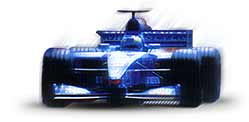 Sport includes
all commercials that make a clear reference to sports of all forms, show
main characters involved in sporting activities or after sports. Light
beer is ideal for this kind of image as more sportspersons can consume
it without affecting their state of fitness and alertness. We would like
Foster’s to be associated with this kind of image as it goes well with
the USP ‘low calories, low alcohol content’ and is also in line with its
international trend as Foster's Lager is characterised by its worldwide
reputation and the excitement of its sponsorship associations to premier
events like Formula One Grand Prix. Foster's has a long and proud association
with Grand Prix Formula One racing around the world. Foster's is one of
the world's fastest-growing international premium beer brands and Grand
Prix Formula One racing has great synergy with the global marketing of
Foster's. Foster's established its involvement with Formula One Grand Prix
back in 1986 with its
Sport includes
all commercials that make a clear reference to sports of all forms, show
main characters involved in sporting activities or after sports. Light
beer is ideal for this kind of image as more sportspersons can consume
it without affecting their state of fitness and alertness. We would like
Foster’s to be associated with this kind of image as it goes well with
the USP ‘low calories, low alcohol content’ and is also in line with its
international trend as Foster's Lager is characterised by its worldwide
reputation and the excitement of its sponsorship associations to premier
events like Formula One Grand Prix. Foster's has a long and proud association
with Grand Prix Formula One racing around the world. Foster's is one of
the world's fastest-growing international premium beer brands and Grand
Prix Formula One racing has great synergy with the global marketing of
Foster's. Foster's established its involvement with Formula One Grand Prix
back in 1986 with its  sponsorship
of the Australian Grand Prix in Adelaide. At home in Australia or abroad,
Foster's has been actively promoting the brand's association with Grand
Prix ever since. In India, we can capitalize on the mass appeal of cricket,
and may even use this to draw the Aussie connection.
sponsorship
of the Australian Grand Prix in Adelaide. At home in Australia or abroad,
Foster's has been actively promoting the brand's association with Grand
Prix ever since. In India, we can capitalize on the mass appeal of cricket,
and may even use this to draw the Aussie connection.
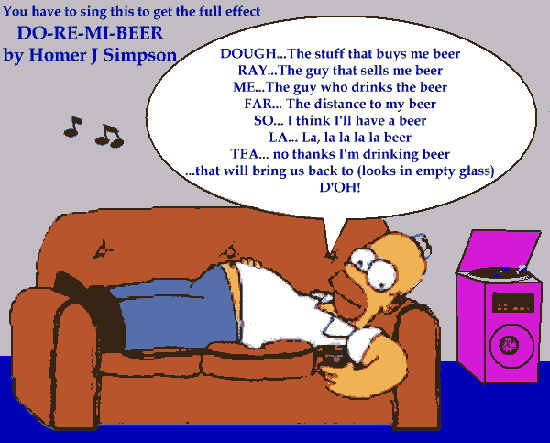 Commercials
focusing on the tradition of the brewery or the product, showed
historic buildings or images or were set in a historical background were
judged to have "tradition" as the dominant appeal. We would not advocate
an image of this nature, as our brand personality is essentially very different
from this.
Commercials
focusing on the tradition of the brewery or the product, showed
historic buildings or images or were set in a historical background were
judged to have "tradition" as the dominant appeal. We would not advocate
an image of this nature, as our brand personality is essentially very different
from this.
Finally, commercials showing the main character in a clearly relaxing
situation, where the main character consumed beer primarily as a way to
unwind and relax (mostly alone), use "relaxation" as the dominant
appeal. Again, this is not an accurate representation of the product image.
However, if your agency feels that such an image would cater to certain
untapped sectors of the population, then we are not by any means averse
to such an image so long as it is in line with the broader brand image.
To shake the ''yuppie beer'' label for Heineken, Lowe Lintas targeted consumers 21 to 35 years old. The company also is stepping up its profile with product placements in movies such as Austin Powers (someone touches Mike Myers' ''heinie'') and TV shows such as The Sopranos. Its $40 million campaign, which includes a spot with Mike Myers of Austin Powers fame, may be hitting those targets. Heineken says sales growth is double-digit this year. Ad Track found the spots did appeal to guys: 21% liked the ads "a lot" vs. just 13% of females who did. They were a tad more popular with 18- to 29-year-olds (19%) than with respondents ages 30 to 49 (18%). Though the hip spots appear to be about sex and the city, Davis says they work for a different reason. From the tagline to the plot, they are about a desire for Heineken. ''Our ads make the beer the hero,'' Davis says.
Keeping in mind the restrictions on advertising in the country, we feel that product placement may be an excellent approach to the promotion of our brand as well, especially as it is a new brand and it will increase awareness greatly.
Stroh's, the great American beer, stormed the Indian market and within a short period has established itself as a force to reckon with. HakkeBeck in collaboration with Him Neel Breweries has yet to make a dent while San Miguel, the Fillipino giant working with Associated Breweries, is seriously making its presence felt. Its advertising campaign though raises an eyebrow or two. Our own Foster's, Australia's mega brand, has thrown its hat into the ring and its logos alone have given it great visibility. The ad campaign reinforces the distinct Australian identity of the brand. We would like to keep the trend going with reference to this product.
I have taken the liberty of enclosing some Carlsberg advertisements for your perusal.
Every day millions of people around the world enjoy drinking Foster's Lager, and the striking red F and the Foster's Lager blue and gold are instantly recognised by beer drinkers around the world. We at Foster’s follow the five C approach to branding -
Communication
Building familiarity and relevance to consumers is only achieved through effective communication of the brand message. Foster's spreads its brand message through promotional programs, sponsorship and public relations.
Continuity
Brand equity is enhanced by long-term marketing programs to ensure a cumulative build over time. Australianness is the essence of Foster's brand image is promoted in every market in the world. All Foster's lager theme advertising is consistent with an Australian positioning. A powerful range of award winning advertising and promotional programs has been the driving force of the brand's success.
Consistency
Global consistency in brand packaging and advertising image portrayal, in both above and below-the-line programs, builds upon the brand's strengths. Also, stringent controls are in place to ensure the Foster's experience remains consistent around the world. This experience guarantees a consistent high-quality product and brand support that makes Foster's Lager instantly recognisable and familiar to beer drinkers the world over.
Co-operation
Foster's seeks partners to build the brand's success through co-operative arrangements. An impressive international network of major brewing companies, distributors and hospitality partners make up the worldwide Foster's team. As a leading world brand, Foster's has secured major licensing and brewing agreements in the Americas and in Europe. Carlton & United Breweries expands the network in Australia, while Foster's Brewing International distributes their product to the Middle East and Africa. Foster's Brewing International also produces Foster's lager in strategically placed breweries in Asia and the Pacific region.
Control
Foster's tightly controls the brand and its image to manage, protect and grow the brand equity worldwide. Foster's Brewing International has strict controls in place to protect Foster's image, reputation and identity. Their Australian-based marketing team set the brand direction, uphold standards and promote the latest technology to develop communications links between their marketing team worldwide. Foster's has an electronic, virtual global marketing office.
9. What kind of personality do we desire for our
brand? Personification of brand and detailed brand personality statement
is enclosed.
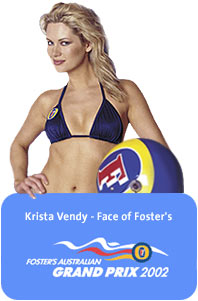
She communicates an image that is stylish and confident. She is a Generation X girl - independent and contemporary, yet different. She is unique and intelligent, a great deal of fun to be with. She is the quintessential party monger, vivacious and full of life.
She is adventurous and sporty (pun intended), a risk taker and go-getter.
She’s a part of the gang. She is always where the party is. Not a girl
one can forget easily, even after 3 beers.
Australia's climate, landscape, people and attitude, its youthful exuberance, is at the core of Foster's identity - "Australianness". Foster's Australian image is laid back and friendly. It typifies the "no worries" approach to life.
Formula One is the most-watched sporting event in the world. The 17-race calendar attracts an audience of 600 million viewers per race. Both Foster's Lager and Formula One are international, fun, aspirational, youthful and glamorous. A partnership between two of the world's most desirable and high profile global properties. This relationship with sports may also be extended to Cricket in India.
The association of fit, healthy, successful young athletes building a thirst in competition and then celebrating with a refreshing Foster's was an irresistible image. Foster's sponsored the Australian Rules Grand Final telecast internationally and introduced signage at every major Test Cricket ground. In 1985 CUB announced that the Melbourne Cup, Australia's world-famous two-mile horse-race, would be worth $1 million and would henceforth be called the Foster's Melbourne Cup.
Australia snared a round of the Formula One World Championship in 1985 and from 1986 to 1994, Foster's seized the sponsorship rights to the Australian Grand Prix. Today, Foster's is an official sponsor and the official beer of Grand Prix races around the world
10. What aspect of the brand offering should the
tagline capture? (Examples included)
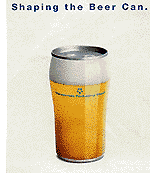 The
tag line needs to emphasise the arrival of Foster’s in the market with
a bang, so that the product has greater visibility. I am sure you must
have already got a fairly good idea of the Foster’s tradition and what
it epitomises. You are the king as far as the tagline goes. I can only
make suggestions which give an inkling into what we are trying to convey.
For example -
The
tag line needs to emphasise the arrival of Foster’s in the market with
a bang, so that the product has greater visibility. I am sure you must
have already got a fairly good idea of the Foster’s tradition and what
it epitomises. You are the king as far as the tagline goes. I can only
make suggestions which give an inkling into what we are trying to convey.
For example -
‘Foster’s LightIce Beer. Welcome to the Ice Age.’
‘We wanna take you higher’
‘Excuse me, do you have a light?’
I am listing a few of the taglines that ‘made the brand’ in the beer industry.
Heineken: Heineken refreshes the parts other beers cannot reach.
Abbot Ale: Worshipped since 1799.
Budweiser: Whassup?
Grant's: As long as you're up get me a Grant's.
Heineken: Come to think of it, I'll have a Heineken.
I am also listing some famous beer quotes that may help if only to funnel creative thought.
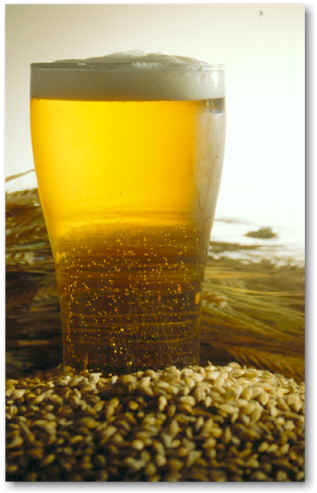 “He
was a wise man who invented beer” – Plato
“He
was a wise man who invented beer” – Plato
“Life, alas, is very drear. Up with the glass! Down with the beer!” – Louis Untermeyer (1885-1977)
“If God had intended us to drink beer, He would have given us stomachs.” - David Daye
“Without question, the greatest invention in the history of mankind is beer. Oh, I grant you that the wheel was also a fine invention, but the wheel does not go nearly as well with pizza.” - Dave Barry
“The problem with the world is that everyone is a few drinks behind.” - Humphrey Bogart
“Give me a woman who loves beer and I will conquer the world.” - Kaiser Wilhelm
“Not all chemicals are bad. Without chemicals such as hydrogen and oxygen, for example, there would be no way to make water, a vital ingredient in beer.” - Dave Barry
“Beer is living proof that God loves us and wants to see us happy.” - Benjamin Franklin
“I work until beer o’clock.” - Steven King
 The Cable Television
Network (Regulation) Amendment Bill, in force September 8, 2000, completely
prohibits cigarette and alcohol advertisements. The government controlled
channel, Doordarshan, does not broadcast such advertisements but satellite
channels however are replete with them.
The Cable Television
Network (Regulation) Amendment Bill, in force September 8, 2000, completely
prohibits cigarette and alcohol advertisements. The government controlled
channel, Doordarshan, does not broadcast such advertisements but satellite
channels however are replete with them.
Limitations – The per capita consumption in India is hovering around a measly 0.5 litres per annum. These figures pale into insignificance if one compares them with those of Czech Republic that has the highest per capita consumption of 156 litres per annum. Per capita consumption is directly related to the taxation, according to an industry observer. For instance, in Maharashtra there is a direct 100% excise duty on Beer. An equivalent 650 ml bottle is available for approximately Rs 8 in China. Which is why the per capita consumption in China is a high 16 litres per annum.
Adding to the trouble is the fact that distribution of alcohol is a state-controlled activity. This means that not only do taxes vary significantly across states (a 330 ml bottle of Foster’s is available for Rs 21 in Delhi and at Rs 32 in Hyderabad) but also there is a possibility of tax being levied at two levels. Foster’s found this out when we were planning a foray into the Goan market. The Government of Maharashtra was enforcing an export fee pass while the Goan government was asking for an import pass fee.
Brewers now want the government to classify beer as a beverage. All-India Brewers' Association President Zinia Lawyer has suggested that the taxes on beer and raw material be reduced to make it more affordable with the uniform and rational tax structure through all states. "We price beer higher than a 180 ml bottle of spirit because of the high taxes and that is why it is encouraging consumers to drink hard liquor," says beer industry consultant B. Purnayya, advocating that Andhra Pradesh follow the Maharashtra pattern of grading restaurants and allowing some categories to serve beer to make it a win-win situation for the government, restaurants and consumers. Such a move would benefit our product to a great extent.
Causes for optimism -
However, we are very optimistic about our future in India because:
1. India has predominantly a warm/hot climate
2. The beer-drinkers in the country are much younger than the average beer-drinker elsewhere in the world. This makes them more likely to carry the brand with them for a lifetime.
3. Increasing exposure to beer and wine drinking, mainly due to media and consumer mobility.
All these factors combined make the scenario very promising for Foster’s
and are 'in sync' with our strategy for India.
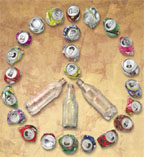
In India, pint-sized bottles have been an exception rather than the rule. In fact, 99% of beer consumed is from 650 ml bottles. This was in tune with the trend in other developing countries.
In 1993, Kingfisher Lager took suit and was introduced in cans and pints in Mumbai.
However, Foster’s entered the market with both sizes, though pint-sized (330 ml) bottles are more aggressively promoted. “We want to establish Foster’s as an international premium lager beer. Therefore, the international packaging and size,” justifies Pradeep Gidwani, Managing Director, Foster’s India Ltd. 70% of Foster’s sales come from the pint-sized market and we enjoy 31% of the market in Maharashtra.
Initially, we plan to launch our product only in Maharashtra. Then we will move onto Goa and subsequently into Andhra Pradesh and Pondicherry. We can start moving towards Delhi in February 2004. Plans to venture into Himachal Pradesh, Punjab, Haryana and Uttar Pradesh can then commence.
Our company has decided to stay off the surrogate-advertising route (which is necessitated by restrictive advertising laws) and concentrate on sponsorships and other promotional activities. In a cricket-crazy nation, the alternatives are not too hard to find; cricket and Formula One racing are the two chosen vehicles for brand endorsement.
We set up a 1.5 hecta-litre manufacturing capacity in Aurangabad becoming the first international brewery to set up manufacturing facilities in India. All other players have opted for the licensing and royalty arrangements route. This gives the company control over the operations and of course a logistical advantage
For United Breweries, its online facility is making a huge difference. All consumers need to do is log on to www.kingfishernetshop.com and get their beer - a minimum of six bottles - home-delivered. According to UBL Branch Manager S. Diwakaran, the move has been a big draw with info-tech professionals and "discreet" women drinkers. The online outlet apart, much of the beer boom has been through sales from some 1,600 shops, and not pubs and bars. We think a similar online facility for promoting and facilitating the sale of our product will help not only in the advancement of the product itself but will also go very well with the image of the product, while cutting into UB’s ‘virtual monopoly’ as the target audience of such a feature is more in tune with the Foster’s brand image.
